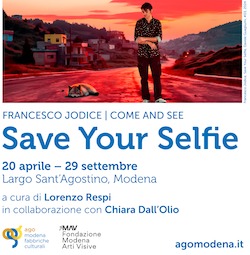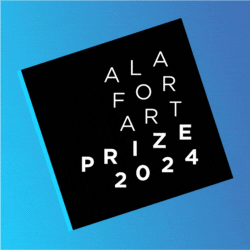“Fall” will be open until November 15th.
Martedi 16 Settembre la Galleria Francesca Minini ha inaugurato “Fall”, mostra personale dell’artista inglese Becky Beasley. In esclusiva per i lettori di ATPdiary, l’artista ha commentato un diario fotografico per raccontare la genesi della mostra.
“Fall” rimarrà aperta fino al 15 Novembre.

In Autumn 2012 I tasted ripe persimmon (cachi in Italian, pronounced kaki) for the first time in Milan. Eaten with a spoon, like runny jam straight out of their skins. The trees in Milan were full to drooping with the heavy fruit; the fallen, splattered like small wet bombs on pavements. I began thinking about Autumn as a sculptural proposition for a show, something like the sound of fruit hitting the pavement, like fallen bodies.
Nell’autunno del 2012 ho assaggiato per la prima volta i cachi, a Milano. Mangiati con un cucchiaio, sono come marmellata che cola direttamente fuori dalla buccia. I rami degli alberi a Milano erano carichi di questi pesanti frutti; quelli che erano caduti, spiaccicati come piccole bombe bagnate sui marciapiedi. Ho iniziato a pensare all’autunno come proposta scultorea per una mostra, qualcosa come il suono di frutta che colpisce il marciapiede, come corpi in caduta.

Early September 2013 I made a trip to Milan to begin preparing for what, at the time, I was calling ‘CRAZY. NUTS. BANANAS.’ I wanted to revisit the gallery and collect some nuts. I’d been interested in the idea of ‘seasonal’ works and exhibitions for a while– for example, a one day (live?) show on the one day that flying ants are flying about- and had exhibited my show, Spring Rain, earlier that year, in March and April.
In returning to my diary today to find out exactly when I had travelled to Milan, I remembered something very special about that trip. On arriving at my friend Alessandra’s apartment late afternoon on the 3rd September, sitting in her kitchen, talking while she made us some tea, a sudden beam of sunlight cast across the room and I knew, at that moment, I was pregnant.
All’inizio di Settembre del 2013 ho fatto un viaggio a Milano per iniziare a preparare quella che, in quel periodo, chiamavo ‘CRAZY. NUTS. BANANAS.’ Volevo riesaminare la galleria e raccogliere delle noci. Da un po’ di tempo ero interessata all’idea di lavori e mostre “stagionali” – per esempio, una mostra (dal vivo?) della durata di un giorno nel giorno in cui le formiche volanti si mettono a volare – e quello stesso anno avevo inaugurato la mia mostra, “Spring Rain” (Pioggia Primaverile), a Marzo e Aprile.
Tornando oggi al mio diario per vedere l’esatto giorno in cui avevo fatto quel viaggio a Milano, mi sono ricordata di una cosa molto speciale riguardo a quel viaggio. Arrivata a casa della mia amica Alessandra nel tardo pomeriggio del 3 Settembre, mentre ero seduta nella sua cucina, parlando mentre lei stava preparando del tè, un improvviso raggio di luce ha attraversato la stanza e io ho capito, in quell’esatto momento, di essere incinta.

I bought a small bag of Tuscan walnuts in Venice, where I finally got to see Christopher William’s Angola to Vietman, 35mm photographs of glass flowers from the collection held by Harvard University’s Botanical Museum, each specimen selected by Williams for being a native of countries accused of human rights violations. It is a work I have loved for many years but had only seen in reproduction.
Ho comprato un piccolo sacchetto di noci toscane a Venezia, dove alla fine sono riuscita a vedere “Angola to Vietnam” di Christopher Williams, una serie di fotografie in 35mm di fiori di vetro provenienti dalla collezione del Botanical Museum della Harvard University, di cui Williams ha selezionato solo gli esemplari originari di paesi accusati di aver violato i diritti umani. E’ un lavoro che ho amato per parecchio tempo ma che avevo visto solo riprodotto in delle pubblicazioni.

On returning home, Steve and I went foraging for nuts and twigs and anything else that caught our eye in the local woods. We found some acorn branches with green acorns which I photographed hand-held at the studio. Handheld nuts, that was the joke…I was holding the nuts, not the camera!
Al mio ritorno io e Steve siamo andati in cerca di noci e ramoscelli e qualsiasi altra cosa catturasse il nostro sguardo nei boschi vicino a casa. Abbiamo trovato dei rami con attaccate delle ghiande che ho fotografato e portato in studio. Noci portatili, questa era la battuta della giornata… In mano avevo le ghiande, non la macchina fotografica! (Qui Becky fa un gioco di parole intraducibile tra l’assonanza di “and held”, ‘e ho tenuto’ e “handheld”, ossia palmare, inteso come dispositivo portatile, N.d.T.).

Steve’s sister, Deborah, and his niece, Anya, came with us to the woods. While we were walking Steve told Debs that we were pregnant.
We fall in love, we fall pregnant…
La sorella di Steve, Deborah, e sua nipote, Anya, sono venuti con noi nei boschi. Mentre stavamo passeggiando Steve ha detto a Deborah che ero incinta.
“We fall in love, we fall pregnant…”

As with Spring Rain – where I started by photographing Steve holding three organic cucumbers- the first thing I found myself doing was shooting a roll of film of him holding a pair of walnuts at the studio. We were also wondering if we’d have twins, given the incidences of twins in both our families, there was a strong possibility.
Come con “Spring Rain” – dove ho iniziato fotografando Steve che reggeva tre cetrioli biologici – la prima cosa che mi sono ritrovata a fare è stata usare un intero rullino di pellicola per fotografarlo mentre, seduto nello studio, teneva in mano un paio di noci. Ci stavamo anche chiedendo se avremmo avuto dei gemelli; data la frequenza di gemelli in entrambe le nostre famiglie, la probabilità sarebbe stata alta.

My nephew Ben’s birthday is in early October. The first photo I made was this picture made of monkey nuts which we gave Ben as his 4th birthday present that year. The word play was a little lost on him…
Il compleanno di mio nipote Ben è ai primi di Ottobre. La prima foto che ho fatto è stata questa immagine composta con arachidi. L’abbiamo regalata a Ben per festeggiare i suoi 4 anni. Penso che non abbia afferrato il gioco di parole…

Peanuts, or groundnuts, grow underground. The peanut is not technically a nut, but a legume. I took this photo from, “The Book of Edible Nuts”, by Frederic Rosengarten Jr. (Dover Publications Inc., 2004). If you’re interested in nuts and their histories it’s the best book available. I like they way the plant has been photographed in full view so that the nuts hang in the air instead of being buried in the ground. I think this picture, with it’s slow, hanging atmosphere, changed my thinking about the show from fallen to falling bodies, but also as suspended in photographic time.
Buildings fall into disrepair, we fall into dispair, our eyes fall, our faces fall, we fall to our knees. We miscarry.
Le arachidi, in inglese anche conosciute come “groundnuts”, crescono sotto terra. L’arachide tecnicamente non è una noce, ma un legume. Ho preso questa foto da “The Book of Edible Nuts”, di Frederic Rosengarten Jr. (Dover Publications Inc., 2004). Se siete interessati alle noci e alle loro storie, è il miglior libro che c’è in giro. Mi piace il modo in cui la pianta è stata fotografata, così che le noci pendano nell’aria invece di stare sepolte nel terreno. Penso che questa foto, con la sua atmosfera lenta, sospesa, abbia cambiato il mio pensiero riguardo alla mostra, facendolo passare da qualcosa che riguardava corpi caduti a qualcosa che riguarda corpi in caduta, ma anche sospesi in un tempo fotografico.
“Buildings fall into disrepair, we fall into dispair, our eyes fall, our faces fall, we fall to our knees.” Abbiamo un aborto spontaneo.



At difficult times, I’ve found myself returning to Bas Jan Ader regularly for twenty years now. However simple his work might at times feel, its emotional richness always returns me to the wealth of what I can learn for myself from the delicate body of work he completed. Here are two stills from his Broken Fall (Organic), (1971).
Nei momenti difficili, da vent’anni a questa parte, mi sono trovata a ritornare regolarmente su Bas Jan Ader. Per quanto a volte il suo lavoro possa sembrare semplice, la sua ricchezza emozionale mi riporta sempre alla quantità di cose che posso imparare per me stessa dal delicato corpus di lavori che ha prodotto. Ecco due stills dal suo “Broken Fall (Organic)”, (1971).

Trim’s flourish, from Laurence Sterne’s The Life & Opinions of Tristram Shandy, Gentleman (1759-67), is a drawing which appears in the novel and which describes a line made in the air with a walking stick. It’s a bodily, gestural drawing rendered as a small doodle in a novel. I had been thinking about this scale-relation while working on Spring Rain but it didn’t manifest till I made my first brass twig mobile works.
At New Year we conceive again.
La fioritura di Trim, da “Vita e Opinioni di Tristram Shandy, Gentiluomo” (1759-67) di Laurence Sterne, è un disegno che compare nel romanzo e che descrive una linea fatta nell’aria con un bastone da passeggio. E’ un disegno fisico, gestuale, rappresentato come un piccolo scarabocchio in un libro. Stavo pensando a questo rapporto di scala mentre lavoravo a “Spring Rain”, ma il tutto non si è reso manifesto finché non ho realizzato i miei primi mobile con rami di bronzo.
A Capodanno sono rimasta nuovamente incinta.

Here’s another picture from “The Book of Edible Nuts”. It’s from 1553. I looked at a lot of representations of nature from this period. I like the spatial juxtapositions of scale which are logical – we are shown the tree and also its fruit, interior and exterior – but the result is that the nuts are relatively huge compared to the tree. This picture also makes me laugh as it looks like a cock and balls.
Ecco un’altra immagine da “The Book of Edible Nuts”. E’ del 1553. Ho guardato molte rappresentazioni della natura di questo periodo. Mi piace il logico confronto di scala di natura spaziale – ci viene mostrato l’albero e anche il suo frutto, il suo interno e l’esterno – ma il risultato è che le noci sono relativamente enormi in confronto all’albero. Questa immagine mi fa anche ridere perchè somiglia ad un cazzo con le palle.

The endless opportunity for punning with nuts is more or less lost in Italian. Palle [PAHL-leh] means balls or testicles and can be used as slang in various ways including; Che palle! (What a pain in the ass! or What a drag! lit. What balls!) or Non mi rompere le palle (Don’t bust/break my balls.). No nuts, though.
Le infinite occasioni per fare giochi di parole con le noci si perdono più o meno tutte in italiano. La parola Palle [PAHL-leh] significa “testicoli” e può essere usata in vari modi, tra cui Che palle! (What a pain in the ass! or What a drag! lit. What balls!) o Non mi rompere le palle (Don’t bust/break my balls.). Niente noci, però.

I’ve an ongoing interest in blueprints and technical drawings. I have a small library of hardware books and trade magazines and I like plumbing data with its endless variety of male and female parts. Here we see a coupling nut. I also like the acorn nut.
Da molto tempo nutro un interesse nei progetti e nei disegni tecnici. Ho una piccola biblioteca di libri su attrezzi e cataloghi di ferramenta e mi piacciono le informazioni legate alle tubazioni con le infinite varietà di parti “maschili” e “femminili”. Qui vediamo un giunto (“coupling nut”, traducibile anche come “noce di accoppiamento”. Si vedano i giochi di parole citati sopra. N.d.T.). Mi piace anche il dado a ghianda.

This illustrated page from an old inventory of food is very beautiful. I enjoy not only the paintings themselves but also the spatiality of such pages. We see here a walnut (top right) and, below it, a black walnut. This classic pre-photographic style of representing and classifying types of things, is visually closely related to the 16th century images I have been looking at. I imagined the nuts are suspended, falling down the page.
Questa pagina illustrata presa da un vecchio inventario di cibi è molto bella. Non solo mi piacciono le illustrazioni, ma anche come è usato lo spazio nelle pagine del libro. Qui vediamo una noce (in alto a destra) e, subito sotto, una noce nera americana. Trovo che questo classico stile pre-fotografico di rappresentare e classificare le cose sia strettamente connesso, dal punto di vista visivo, alle immagini del XVI Secolo che abbiamo visto prima. Ho immaginato le noci come sospese, mentre stanno cadendo giù dalla pagina.

Having worked many times with black american walnut wood, I only discovered the black walnuts (Juglans nigra) while working on the ‘Fall’ exhibition. They are quite different to English walnuts. They are darker and much harder. In fact they are so hard, a special vice-like tool is required to crack them. They are native to north eastern America and, as they are more expensive, are really popular only around Christmastime for baking in cakes and cookies. I had a box of them imported from the States and plan to bake with most of them this December, since, in the end, the black walnuts themselves don’t appear in ‘Fall’. I’m going to hold onto a dozen of them for later.
Ho lavorato molte volte con il legno del noce nero americano, ma ho scoperto le noci nere (Juglans nigra) solo mentre stavo lavorando alla mostra “Fall”. Sono abbastanza diverse dalle noci inglesi. Sono più scure e più dure. In realtà sono così dure che per romperle serve uno speciale attrezzo a forma di morsa. Sono native del Nord-Est americano e, dato che sono più costose, si usano più che altro per i dolci e i biscotti durante il periodo natalizio. Ne avevo una scatola importata dagli Stati Uniti e avevo intenzione di farne qualche dolce per questo Dicembre, dato che alla fine le noci nere non compaiono in “Fall”. Ne conserverò una dozzina per dopo.

Earlier this year, someone mentioned Duchamp’s 3 Standard Stoppages in relation to another sculpture and I thought about the implications of this ‘fall’, and the measures lying just outside their box on display in this picture. I saw it as a kind of suspended potential. I always particularly liked its packing box as an integral part of the work. If you google image, ’ 3 Standard Stoppages ‘, there are so many representations of the work in different configurations. This morning I started thinking these images would be a really interesting place to start thinking about a new work.
All’inizio di quest’anno qualcuno ha menzionato i “3 Standard Stoppages” di Duchamp in relazione ad un’altra scultura e ho pensato alle implicazioni di questa “caduta” (“fall”), e le misurazioni esposte proprio fuori dalla loro scatola, in questa foto. Lo vedo come una specie di potenziale sospeso. Mi è sempre piaciuta in modo particolare la scatola come parte integrante del lavoro. Se su Google images scrivete “3 Standard Stoppages” vengono fuori tantissime rappresentazioni del lavoro in diverse configurazioni. Questa mattina ho iniziato a pensare che queste immagini potrebbero essere un interessante punto di partenza da cui iniziare a pensare ad un nuovo lavoro.

Walnut crackers are unusual in that they are often made in the shape of large walnuts inside of which the real walnut is concealed for cracking. Carlo Mollino writes about cameras the size of walnuts in his book on photography, Message from the Darkroom (1949). Here’s a photo of a brass pair from ebay. It occurs to me in English we call this kind of thing, a pair of nut crackers…
It’s a boy. Just the one!
Gli schiaccianoci sono oggetti bizzarri, dato che di solito hanno la forma di grosse noci dentro cui poi viene messa la vera noce per essere rotta. Carlo Mollino nel suo “Il Messaggio dalla Camera Oscura” (1949) scrive di macchine fotografiche delle dimensioni di una noce. Ecco una foto di uno schiaccianoci di bronzo che ho preso da ebay. Mi viene in mente che in Inglese li chiamiamo “un paio” di schiaccianoci…
E’ un maschio! E solo uno!

While writing this diary I finally bought myself a souvenir on ebay. It’s a vintage brass walnut cracker. I liked all the photos of it. The main picture is quite surreal; it looks like it has pouting lips. The ebay photos’ files are quite big so I’m planning a work around these multiple images.
One of the primary meanings of the word, ‘fall’, is birthing, literally the falling of the young. Tommy was due to be born on September 24th 2014, a week after ‘Fall’ opened in Milan.
He arrived the week before.
We fall in love.
Mentre stavo scrivendo questo diario alla fine mi sono comprata un souvenir da ebay. E’ uno schiaccianoci di bronzo vintage. Mi piacevano tutte le sue foto. La foto grande è abbastanza surreale; sembra quasi che abbia il broncio. Le foto sono file abbastanza grandi, quindi sto pensando di realizzare un lavoro su queste immagini multiple.
Uno dei significati fondamentali della parola “fall” ha a che fare con il parto, letteralmente la discesa del nascituro. La nascita di Tommy era prevista per il 24 di Settembre del 2014, una settimana dopo l’opening di “Fall”, a Milano.
Invece è arrivato una settimana prima.
We fall in love.










